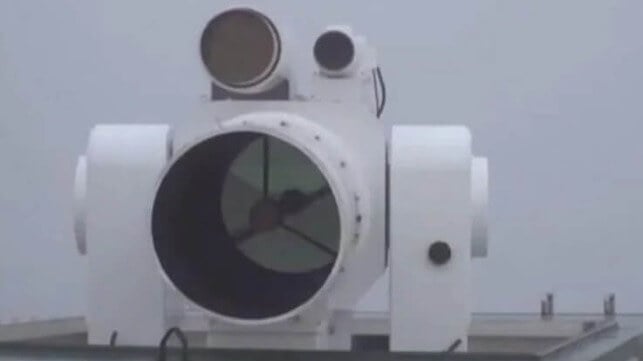Before Houthi Attack, China's Navy Lasered a Surveillance Plane Off Yemen

Last week, a German aircraft carrying Bundeswehr service personnel on a surveillance mission off Yemen was forced to return to base, having been attacked with a laser weapon fired from a Chinese warship. The incident is believed to have taken place on July 2, three days before the Houthis resumed their attacks on shipping in the Red Sea by attacking the Liberian-registered bulker MV Magic Seas (IMO: 9736169). From Houthi propaganda material, the Houthis appear to have boarded the ship once it had been abandoned, and then scuttled the ship with explosives. Ironically, MV Magic Seas has frequently plied routes to and from China.
The German aircraft, believed to be a Beechcraft King 350 chartered from Atlas Air Services, was flying in support of the European Union’s Operation Aspides, whose mission is to protect shipping in the Red Sea and Gulf of Aden. The surveillance equipment package on this aircraft is likely to include radar, ELINT interception equipment, an electro-optic long-range camera and possibly voice communications intercept equipment, as well as access to the AIS ship locating system. Beechcraft King 350 aircraft are widely used in this role, in particular by contractors working for the French government in Libya and elsewhere, and by the UK Royal Air Force’s 14 Squadron.
Germany accuses the Chinese military of using a laser to target a German aircraft in the EU operation ASPIDES and summoned the Chinese ambassador.
— Intel and Recon (@IntelAndRecon) July 8, 2025
I suspect the involved aircraft is D-CUTE #3CF6C2 a chartered German Beechcraft Super King Air 350 from Atlas Air Service https://t.co/696dsQsECy pic.twitter.com/AVgmPkQFIP
Possible identification of the aircraft attacked and a section of its flight path on July 2 (@Intel and Recon).
Following the incident, the aircraft returned safely to its base in Djibouti, and was some days later able to resume operations again. On this basis, the attack is likely to have dazzled the pilots, causing temporary impairment of vision, and not to have damaged on-board sensor systems - which a more powerful laser could have done.
The German Foreign Ministry has made an official complaint to the Chinese authorities concerning the incident. But this is not the first occasion when PLAN vessels have fired lasers at adversaries. The Chinese frequently use such systems against Philippine naval vessels in the South China Sea. A Royal Australian Air Force P-8 Poseidon aircraft patrolling the Australian Exclusive Economic Zone off northern Australia was attacked by a Chinese naval laser in February 2022, and the US Navy’s 7th Fleet has frequently suffered similar issues in the Pacific.
The laser fired on July 2 was likely mounted on one of the Chinese People Liberation Army Navy (PLAN) vessels of its 47th Naval Escort Group, comprised of Type 052D guided-missile destroyer Baotou (F113), Type 054A guided-missile frigate Honghe (F523) and the Type 903A replenishment ship Gaoyouhu (K904). The 47th Naval Escort Group is coming towards the end of its six-month rotation home-ported at the PLAN base in Djibouti. Typically, PLAN Naval Escort Group vessels do not assist non-Chinese merchant ships.

that matters most
Get the latest maritime news delivered to your inbox daily.
It is unclear whether the firing of the laser was an action authorized by a commander at ship level, or whether the attack fell within terms of engagement reflecting PLAN operational guidelines to commanders and political direction. Given the lack of operational initiative normally delegated to junior officers in the PLAN, the latter is more likely.
Whatever the case, the net effect of the Chinese action was to curtail Operation Aspides surveillance activities in the critical period leading up to the Houthi attack on the MV Magic Seas - which had no warship close at hand to provide cover or to come to its aid when it was attacked. This absence of coverage may also have contributed to the Houthi attack on the MV Eternity C on July 7, which sank the ship and killed three crew members.
